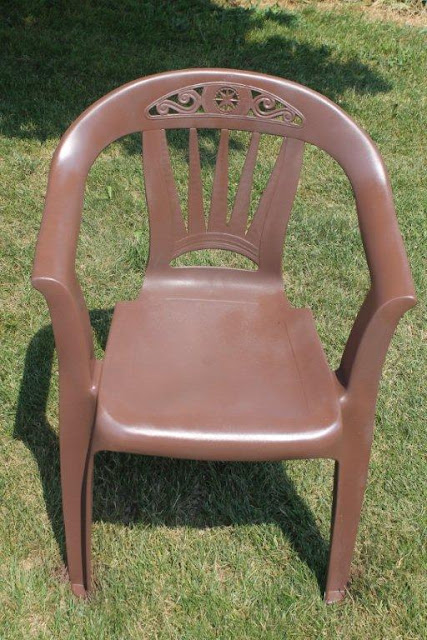Painting Plastic Chairs
2011 Photos, All in one album
I think I am going to like this.
My dilema now is how to do books like this by theme, when I do not feel like the theme has ended. Still, if I do the albums in volumes, it will still be so much thinner, easier, and cheaper than the way I have been doing it.. We can have "Christmas 1991-2000", followed by "Christmas 2001-2011", etc.
This album cost me right around $55, with the free shipping code. It would have cost me a lot more if I scrapbooked it traditionally. I can't wait to see how it turns out!
At the Livestock Auction This Afternoon
The sale seems to run later and later every week. It is almost 3:30 now, and there is still a pen and a half of sheep before they will get to the goats.
Lots of changes here in the last year. The computer system is a great upgrade. We used to have to wait for the paper slips to travel up to the office before we could pay for what we bought. Now we can walk up immediately, pay, and leave.
They used to sell the sheep after the goats and poultry, now they sell between the calves and goats. I don't know what prompted the change, but it used to be you would only see a few sheep here. Often none at all. This spring there are full pens of sheep, every week. Sometimes there appear to be as many sheep here as there are calves. There is one pen of really adorable yearlings, with long pretty fur. Another pen has 8 older sheep that do not look healthy at all. :-(
There is a lot more poultry here ever& week too. We brought in a crate of sex link hens, and a duck, today- cleaning out some of my excess poultry. I prefer the "prettier" breeds, so the plain sex links are being sold to make more room for them. Last year my hens hatched out some really pretty babies, I can't keep everything, and I want to keep these. The duck I like, but he is male and tries to mate with my hens- he's hard on them, ripping feathers from their necks, so he is being sold. He was dropped off at my house with some hens last year, I don't think he knows he is a duck.
There are several crates of meat chickens here, they look like they have come out of a commercial barn. Not full grown, but well started. A few boxes of rabbits, and at least two boxes with a hen and babies. One box has 8 week old barred rock chicks. I'd take them home, but with my luck they would all be roosters.
There are only 6 goats here today. A boer nanny & 2 babies thatis thin and wormy looking, but obviously friendly and a good mom. I wasn't looking for a boer goaat, but as I watch her, I just like her. She has a good temperment. Another boer, looks like a 4H or show goat. Aloof. A little overfed. A black dwarf baby, and a large, gorgreous, all black boer. For looks, I was watching her. I don't have an all black goat, she'd be a nice addition. But she is not very friendly, and is a little aggressive towards the others. I'm going to watch, but I wont pay too much for her.
Absolute insanity with the goat prices today. Kids sold for $110. Nannies went for $160 and up. I have no idea what that was about, prices are normally about half to 3/4 of that. So no new goats for me today! I bought a grey hen and her 9 peeps for $5. I didn't need them, but I have a weakness for grey hens, and for babies.
Dewart Livestock Auction
It's packed here today. We brought in a rooster and three geese to sell- got $7 each for the geese and $4 for the rooster. Much better than i expected.
Two beautiful alpacas went for $110 each. Guineas brought $9 each today.
Dewart livestock auction is held every monday, starting outdoors with eggs, corn , hay, and a very small produce sale. Calves start about 1:00pm, usually getting to goats and sheep around 2:30, followed by poultry, pigs, then the larger steers and cows.
Talking to Much & Meddling In The Affairs Of Others
From our BSF notes this week (last notes for our study of Acts)
"Peter states that when we are reproached for the name of Christ or falsely accused, we are to rejoice (1 Peter 4:12-16). However, we are to be careful that the charges are not because we talk to much, or meddle in the affairs of others."
I've been watching so much strife on facebook lately, and this has me thinking about the division between standing up for what you believe, and meddling in the affairs of others. Social media makes meddling so much easier today- every status begs for a response, that is the purpose of posting, right?
But maybe not. Just because someone declares their beliefs in their status does not mean we need to respond at all. We can disagree without words, but simply by how we live our own lives. Unconcerned by the choices of those with whom we have no power to change, we are freed from so much strife.
1 Peter 4:12-16 NIV:
"Dear friends, do not be surprised at the fiery ordeal that has come on you to test you, as though something strange were happening to you. But rejoice inasmuch as you participate in the sufferings of Christ, so that you may be overjoyed when his glory is revealed. If you are insulted because of the name of Christ, you are blessed, for the Spirit of glory and of God rests on you. If you suffer, it should not be as a murderer or thief or any other kind of criminal, or even as a meddler. However, if you suffer as a Christian, do not be ashamed, but praise God that you bear that name. "
My 2012 Garden Plan
Dealing With CL in Goats
There is a new policy at the Dewart Livestock Auction, we can't go into the pens to check the goats anymore.
So the inevitable happened.
This week I bought a goat with CL. I couldn't see it, her ear covered it until we got close.
We've had CL on the farm before. I bought goats from a local, reputable, goat farmer, and they all had it. He said he knew, but didn't' mention it because to him it's not a big deal.
It's a big deal for me.
But not a deal breaker. I could resell Jane, shown above, but I like her.
She's not in with the other goats for now - she's in a dog kennel. We (by "We" - I definitely mean Dan) cut the spot open (in a location on the farm where non of our animals graze), drained it and cleaned it with peroxide, then with iodine. In the past when we have done this, it has only come back in one goat. I do think it effects them internally, and I suspect that Jane will not live as long or be as healthy as some of our other goats. But she should be ok. She can have babies. She should not infect the others (as long as there is no return of any seepage).
There's so much online, and every goat farmer tends to view CL differently. We do not plan to return to herds of 40 goats - I'm only going to keep around 8-10 nannies here. So each one I pick has to be one I REALLY like. Since Emma looks just like Jane, it is possible I will sell Jane later. But not until I am sure she is healed up from this abscess at least.. She is not coughing, but there is no way for me to know if she already has internal abscesses at this time.
There were several goats at the market this week, in the pen with Jane. This was lightly seeping when we brought her home. It's very likely all the goats in with her have been infected. That's something to keep in mind - just because you can't see CL, doesn't mean they do not have it. Any goat I buy could have it. I think it's better to deal with it, than to obsess over it. Time will tell if I am being naive.
========================================================================
More Links:
http://www.aces.edu/pubs/docs/U/UNP-0085/UNP-0085.pdf
http://www.clgoatcare.org/
http://www.sa-boergoats.com/ASP/Maria-Browning/Caseous-Lymphadenitis.asp
http://www.tennesseemeatgoats.com/articles2/CLFormalin.html







